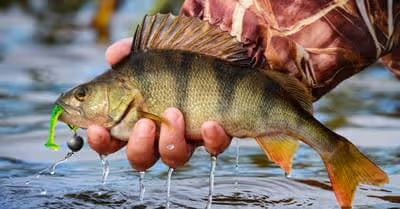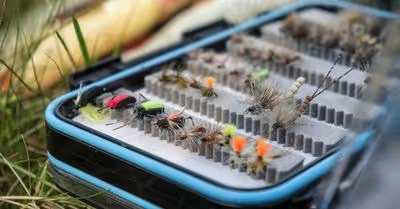Table of Contents
Basic Terms
Before we begin, there are a few basic terms that you should learn that will help make this process a bit easier. There are three that are important to know, and you should remember these as we go through each step.
The Tag End
This term refers to the ending section of the fishing line, which will be the section that you will use to tie the knot.
The Standing Line
This term refers to the fishing line that goes up to the reel, or the line that is not used to tie the knot.
The Turn
This refers to what happens when you wrap the end of the line (the tag end) all the way around the remaining standing line. Also called the wrap.
Step 1: Thread the Hook
You will begin by holding the hook in one hand, and the line’s tag end in the other. To thread the line through the hook, you will use the same motions as if you are threading the eye of a needle. Grab the tag end between your index finger and thumb so that there is about an inch or so sticking out from your fingers.
Then, you will hold up the hook eye and slowly put the line through the center. Once you see the line has gone through, you will pull the tag end with the hand that was holding the standing line until there are between eight to ten inches of line pulled through the other side of the hook.
Step 2: Begin Turning
As you are holding the tag end, you want to see the standing line of the other side and fold the tag end towards the standing line so that the line is still through the hook, but both sections are parallel to each other.
Then, you will begin to turn the tag end around the standing line so that it is completely wrapped around for 360-degrees. You will repeat this turn until the tag end is wrapped around the standing line at least five times.
Step 3: Thread the Tag End Through the Loop
Now, there should be something that resembles a wrapped cord leading to a loop that is attached to the eye of the hook. When held up, the line should a bit like a noose. When you have the turns done, you will take the tag end and thread it back through the loop attached to the hook eye.
By doing this you will have formed a loop that contains the wrapped area of the line.
Step 4: Thread the New Loop
Once you have put the tag end inside and through the hook eye loop, there should be a second loop that contains the wrapped section. Pull the tag end of the line back through this loop and toward the standing line. The tag end should now be through the loop that is holding onto the hook, and through the loop that contains the wrapped area.
You want to leave the loops loose for now, until you complete step 5, so don’t pull the tag end any further than it has to be to stay through the loop without unraveling itself.
Step 5: Moisten the Loops
While the loops are still loose, you will want to wet them with a bit of water, or your saliva, to moisten them. This is best done by licking your fingers and rubbing them over the line. This will help keep the knot in place once you are done tying it and allow the line to move smoothly against itself when you are tightening the knot.
Step 6: Pull the Line
Once your line is properly lubricated, you will grab the remaining tag end with the standing line in your dominant hand and the hook with the other. Then, begin to pull them away from each other in opposite directions with a steady motion.
You don’t want to pull too hard and risk snapping the line, so make sure that you pull softly at first until you see the loops closing.
Step 7: Tighten the Knot
Once you have seen the loops begin to close up, you will want to continue pulling the knot to tighten it. This is best down with a steady pressure at a slow pace, ensuring you do not rip the line. You want the knot to be secure enough to hold on when a fish is writhing on it, so continue to tighten the line until you can feel that it won’t come apart.
Step 8: Clip the Tag End
After the knot is tightened, you will take the end of the line and cut it so that there is between 1/4-inch and 1/8-inch. A sharp knife, scissors, or nail clippers will all work for cutting the line.
Step 9: Secure the End
The end of the line should now have a clean cut. Now, you will want to take a match, light it, then blow it out. While it is still hot, touch the end of it to the end of the line so that a small bubble shape will form around the tip. When you see the ball form, you can remove the match and blow air on the end of the remaining line to cool it off.
You should see a small round ball at the end. This will help prevent the line from coming loose and unraveling when being tugged on.
At this point, this last step is optional. However, this is recommended for beginners and those who will likely struggle to catch a larger sized fish.
Recent Articles
















